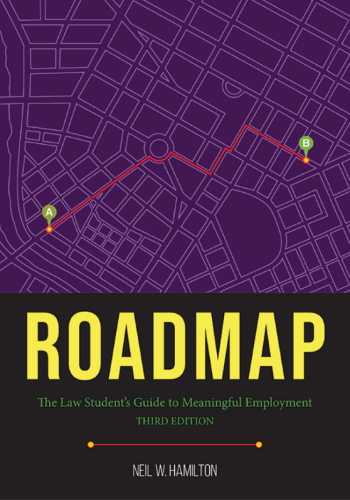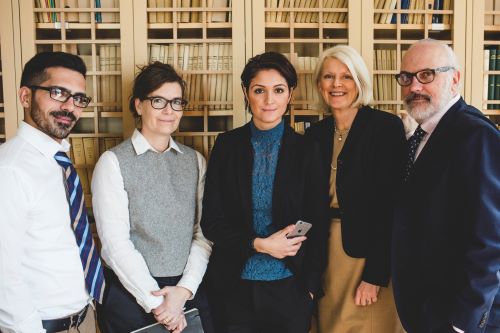James Leipold served as the executive director of NALP (National Association for Law Placement) for over 18 years. He now works as a senior advisor with the Law School Admission Council (LSAC). Leipold wrote a thorough review of Neil Hamilton’s Third Edition of the award-winning book, Roadmap: The Law Student’s Guide to Meaningful Employment, published by the ABA. Leipold’s detailed and insightful review can be found here.
Career Services
Breaking Down Siloes and Building Up Students: The Transformational Possibilities of Professional Identity Formation
By: David A. Grenardo, Professor of Law and Associate Director of the Holloran Center for Ethical Leadership in the Professions, University of St. Thomas School of Law
Three national leaders in professional identity formation—Lindsey P. Gustafson, Aric K. Short, and Robin Thorner—came together to author an exceptional article focused on professional identity formation. Their article, Breaking Down Siloes and Building Up Students: The Transformational Possibilities of Professional Identity Formation, will be part of the University of St. Thomas Law Journal’s spring 2023 symposium issue that will explore pedagogies relating to professional identity formation.
Here is the abstract of the article:
Under the ABA’s sequenced approach to implementation of Standard 303(b)(3), schools should now have developed plans for providing opportunities for professional identity formation and should be implementing them. These plans must provide students with an “intentional exploration of the values, guiding principles, and well-being practices considered foundational to successful legal practice.” In addition, these plans should provide for frequent opportunities for development, “during each year of law school and in a variety of courses and co-curricular and professional development activities.”
Because Standard 303(b)(3) is necessarily tied to the unique character, existing structures, and available resources of a law school, each school’s plan will be different. That has been our experience as we have worked as professional identity formation leaders in different roles with varying perspectives: Lindsey Gustafson at the William H. Bowen School of Law, University of Arkansas at Little Rock, is a current Associate Dean for Academic Affairs and a skills and doctrinal professor; Aric Short at the Texas A&M School of Law is a former Associate Dean for Academic Affairs, a doctrinal professor, and currently serves as the Director of the Professionalism and Leadership Program; and Robin Thorner at St. Mary’s University School of Law is an Assistant Dean for Career Strategy, a teaching adjunct, and the current Director of Professional Identity Formation.
In this essay, we hope to emphasize that professional identity formation efforts can occur all across the law school’s operations, from administrative offices to classrooms to voluntary student activities. We also provide specific examples of how schools can be more intentional and explicit as they weave together multiple professional identity formation opportunities for their students. This process takes time and attention, but it creates a powerful whole-building approach to identity formation that not only complies with 303(b)(3), but also best positions our students for a successful, fulfilling, and impactful career in law.
A link to the article can be found here.
Should you have any questions or comments about the article, please feel free to contact any or all of the authors at lpgustafson@ualr.edu, ashort@law.tamu.edu, and rthorner@stmarytx.edu.
Professional Responsibility and Professional Identity Formation in a Community of Practice with Alumni
By: David A. Grenardo, Professor of Law and Associate Director of the Holloran Center for Ethical Leadership in the Professions, University of St. Thomas School of Law
Every time a bell rings, an angel gets its wings…and Neil Hamilton finishes another article. Neil Hamilton, the Holloran Professor of Law and Co-Director of the Holloran Center for Ethical Leadership in the Professions at the University of St. Thomas School of Law, has completed a new professional identity formation article. Hamilton wrote his latest article for the University of St. Thomas Law Journal’s spring 2023 symposium on professional identity formation. Hamilton’s article explores a new approach to the required Professional Responsibility course that provides reasonable coverage of the law of lawyering, legal analysis, and compliance, but also helps each student understand and participate in a community of practice focused on all the discretionary calls of lawyering in the area of the student’s ultimate practice interest. The student sees that legal ethics knowledge and capacities are not just doctrinal knowledge and legal analysis but are also social and situated in a community of practice. The student also sees that many alumni of the law school are successful in the practice of law while living into the values of the law school and the profession, not just compliance with the minimum floor of the law of lawyering. The student will also understand that in any practice area, the experienced lawyers know who can be trusted and who are the jerks. It will be the student’s and new lawyer’s choice which path to take.
Part II(A) of the article first outlines that the ABA Model Rules of Professional Responsibility (adopted by all 50 states with some variation) codify some values of the profession (like competence, diligence, confidentiality, and loyalty) into the law of lawyering with which licensed lawyers must comply. Part II(A) also explains that many of the Rules give discretion to practicing lawyers with respect to choices about conduct above the floor of the Rules. Part II(B) then analyzes the core values in the mission and learning outcomes of some law schools, and in the Preamble to the Model Rules, that help guide each lawyer’s discretionary decision-making. Part III analyzes how communities of practice influence lawyers in making the discretionary calls of lawyering in a way consistent with the profession’s core values. Part IV explores empirical evidence on whether practicing lawyers think their legal education was an effective community of practice fostering their understanding of these core values in making the discretionary calls of lawyering. Part V discusses Hamilton’s own Professional Responsibility course that creates communities of practice with students and alumni to help students understand the importance of the law school’s and the profession’s core values in making the discretionary calls of lawyering.
A link to Hamilton’s article can be found here.

David Grenardo is a Professor of Law and Associate Director of the Holloran Center for Ethical Leadership in the Professions at the University of St. Thomas School of Law.
INTRODUCING THE STREAMLINED (AND EVEN MORE LAW-STUDENT FRIENDLY) THIRD EDITION OF NEIL HAMILTON’S AWARD-WINNING BOOK, ROADMAP: THE LAW STUDENT’S GUIDE TO MEANINGFUL EMPLOYMENT (2023)
By: Neil Hamilton, Holloran Professor of Law and Co-Director of the Holloran Center for Ethical Leadership in the Professions, University of St. Thomas School of Law
The learning outcome for the ROADMAP is that each student takes ownership (self-direction) over the student’s professional development toward the student’s goals of bar passage and meaningful post-graduation employment. Students at later stages of self-direction demonstrate higher academic performance and planning and implementation skills that increase bar passage and post-graduation employment outcomes. The ROADMAP is empowering each student to perform at the student’s highest capacity. The ROADMAP is also meeting ABA Standard 303(b) and (c) requirements regarding the development of each student’s professional identity.
This third edition of the ROADMAP is a complete revision of the second edition. Since the first edition was published in 2015, and the second edition in 2018, the Holloran Center and I have continued to learn how more effectively to go where the students are developmentally to help them achieve their goals (and the Law School’s goals) of bar passage and meaningful post-graduation employment.
The entire book is now 50 pages at a price of $19.95 (ABA’s website indicates ordered books will ship on August 15 at the earliest). In this edition, the students read 21 pages and then do the template plan which is 5 pages. The reading and the template plan focus on using the student’s time inside and outside of the building to gain experiences that will achieve three goals:
- Thoughtfully discern the student’s passion, motivating interests, and strengths that best fit with a geographic community of practice, a practice area and type of client, and type of employer;
- Develop the student’s strengths to the next level; and
- Demonstrate evidence of the student’s strengths that employers value.
The book then has a chapter on building a tent of professional relationships that helps each student achieve these three goals plus a professional relationship tent-building template plan. This chapter also includes cross-cultural skills addressing ABA Standard 303(c).
A number of law schools already use the ROADMAP, and the hope is that other law schools will discover its incredible value in helping law students with their professional identity formation. To discover what the ROADMAP can do for your law students, you can find the book here.
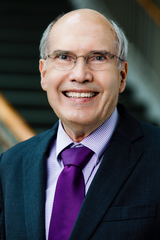
Neil Hamilton is the Holloran Professor of Law and Co-Director of the Holloran Center for Ethical Leadership in the Professions at the University of St. Thomas School of Law in Minnesota.
By: Janet Stearns, Dean of Students, University of Miami School of Law
The updated ABA Standards on professional identity and well-being are going into effect with this new school year. Many of us are seeking accessible and affordable resources for our law students that will (1) address the fundamental challenges around well-being in the profession and (2) recommend practical strategies and resources. An essential element of this canon is Lawrence (Larry) Krieger’s updated booklet, Create Success Without Stress in the Law: New Science for Happiness, Health and Positive Professional Identity (2023).
Many of this Blog’s readers know of Larry Krieger and his longstanding work in the field of well-being, happiness, and balance in the legal profession. Larry co-directs the Externship Program and has been a clinical professor at Florida State University College of Law for more than thirty years. Together with Professor Kennon Sheldon, he authored the seminal article, What Makes Lawyers Happy: A Data-Driven Prescription to Redefine Professional Success. In 2007, he served as founding Chair of the AALS Section on Balance and Well-Being in Legal Education. He has been recognized by both the American Bar Association (2019) and the Association of American Law Schools (2016) with Outstanding Service awards for his efforts to bring greater health and well-being to law students and lawyers. Larry and I have been crossing paths and sharing passions over these past sixteen years, notwithstanding the healthy rivalry between our two institutions.
In 2005, Larry first self-published a booklet for law students, then called The Hidden Sources of Law School Stress. The next year, he published a companion booklet, Deeper Understanding of Your Career Choices. Over all these years, many law schools (including my own) purchase copies of the books for their law students.
The most recent edition of the booklet is about 40 pages and combines these themes of law school stress and evaluating satisfying career choices into one very readable and concise format. As evident in the title, Larry has also significantly sharpened the focus on “positive professional identity” in this latest edition, which makes it a very valuable addition to our toolbox. This recent book has greatly benefited from the collaboration, inspiration, and insights of Theresa Krieger. Theresa is a certified health coach, life coach, spiritual coach, and a fitness trainer recognized by the American College of Sports Medicine. She has worked holistically with law students and lawyers since 2016. The couple created and co-teach a course at the FSU College of Law on well-being, professional identity, and transformational leadership. Lessons from that class are infused throughout this latest edition.
The booklet has six major sections:
- Stress is a choice that you don’t have to make
- Put healthy limits on your legal thinking
- Fear of failure and the illusion of control
- Partying, depression, and distraction
- Finding the right job: surface value or satisfaction value
- Quick and powerful practices to start now (my favorite part, but which flows naturally from the previous sections)
Larry has an incredible understanding of law students and speaks directly to them with honesty and compassion. He covers data and literature on our profession, but also speaks to their worries, doubts, and common stress points. While I cannot promise that every single law student will read the book, those who do have always given it positive reviews and are filled with gratitude that this resource was offered to them.
When should we share this book with students? I suggest five main options:
- Orientation. The book could be shared and distributed with other materials during law school orientation to prepare students for the law school experience, frame common issues and concerns, and prepare them for the path ahead.
- Wellness Week/ Mental Health Day. Many law schools celebrate World Mental Health Day (October 10) with some wellness programming. Larry’s booklet is a wonderful centerpiece for the Wellness Week Initiative, a great handout for a wellness fair, or it can be integrated into other presentations.
- Professional Responsibility and Professional Identity Courses, as part of a focused class on lawyer happiness and well-being, or as a supplement to other textbooks.
- Student Affairs and Counseling Staff, who should have this available as a handout for the student in crisis. Our offices are filled with students with significant anxiety about the law school experience, whether to continue, how to balance competing demands on time and navigate law school’s inevitable stressors. Larry’s book is an amazing and concrete resource, and it has already served as a lifeline to a generation of students.
- Career Development Advisors, who can provide this booklet to students as they are evaluating summer or permanent job options, and trying to plan for their pathway into the profession.
At Miami Law, we typically invest each summer in a supply of Larry’s booklet that would cover our entire first-year class, and then purchase additional copies as needed for our student affairs and career development teams.
If you are interested in investing in Larry’s book for your law school, then please email him directly at lkrieger@law.fsu.edu. He self-publishes the book at the incredibly affordable price of $1.75 to $3 per booklet (based upon quantity) plus shipping.

Janet Stearns is Dean of Students at the University of Miami School of Law and Chair of the ABA COLAP Law School Committee.
Student Professional Identity Formation and the Foundational Skill of Building a Tent of Professional Relationships to Support the Student
By: David A. Grenardo, Professor of Law and Associate Director of the Holloran Center for Ethical Leadership in the Professions, University of St. Thomas School of Law
Neil Hamilton, who is the Holloran Professor of Law and Co-Director of the Holloran Center for Ethical Leadership in the Professions at the University of St. Thomas School of Law, has authored yet another influential and practical article on professional identity formation. Hamilton’s latest article, which is forthcoming in the Wake Forest Law Review, is a guide for law faculty and staff who want each student to build a tent of professional relationships – a professional network – who both support the student and trust the student to do the work of a lawyer. The importance of professional networks for work performance and career opportunities has been well-established in hundreds of empirical studies. In addition, a growing research literature is documenting that the creation of a professional network requires pro-active networking behaviors, which are defined as an individual’s efforts to develop and maintain professional relationships with others who can potentially provide assistance to them in their career or work.
For some students (and lawyers), “networking” with a clear purpose of strengthening support for the student’s professional goals feels inauthentic, impure, and perhaps even dirty. To avoid this negative connotation, Hamilton’s article uses “building a tent of professional relationships who support the student and trust the student to do the work of a lawyer.” This framing, in Hamilton’s experience, fits within the students’ natural understanding of the importance of social support for each person, including the student, and feels authentic and less instrumental to the students.
A link to Hamilton’s article can be found here.

David Grenardo is a Professor of Law and Associate Director of the Holloran Center for Ethical Leadership in the Professions at the University of St. Thomas School of Law.
THE “ONE FILE” COORDINATED COACHING INFORMATION SYSTEM: Developing a Robust Advising Management Application
By: Michael Robak, Director of the Schoenecker Law Library, Associate Dean, and Clinical Professor, University of St. Thomas School of Law
The concept behind developing a robust advising management application is to create “One File” of information developed by and about each student from the law school’s whole organization as the student moves through their law school career.
Collecting uniform information in one place, and allowing for appropriate organization-wide access will, we believe, create an advising mechanism that helps each law student move from novice to professional as described in the Holloran Center’s Competency Alignment Model. (Figure 2 below)

This information system is comprised of three elements:

The first element of this platform, Coordinated Coaching, will be used to capture information for each student from the nine coaching touch points that occur in their journey through law school as identified by Professors and Co-Directors of the Holloran Center Neil Hamilton and Jerry Organ. The Coordinated Coaching takes place at several points: (1) 1L Fall in a mandatory meeting with the Office of Career and Professional Development (CPD), which is described below in detail; (2) 1L Spring in a mandatory 1L class, Serving Clients Well, where professors, alumni, and local attorneys serve as coaches to the law students who work through Neil Hamilton’s award-winning Roadmap book regarding a student’s journey to finding meaningful employment; and (3) 2L and 3L years in the mandatory Mentor Externship program in which the professors teaching the classroom component of this program continue coaching and guiding the students. Capturing information from all of these contributors at these different times will allow for those coaching the students to coordinate to better assist student development of learning outcome competencies. Currently this information is captured and stored in multiple systems and trapped in organizational silos.
The second element of this platform is the Academic Communication System (ACS). We know, anecdotally, there are behavioral “red flags” which constitute potential clues (data points) for those at risk. The University of St. Thomas School of Law (“School of Law”) currently has nothing in place to serve as a tracking/communication platform for all the department administrators to record and share these interactions—the ACS would serve that function. The backbone of this element is key information for all students brought in from Banner. There are eight School of Law departments that would provide information into the system through twenty-three “Reporters” from across those organizations. [1] The first and most important interactions to capture are the ones with the Director of Academic Achievement and Bar Success as the Director is usually the first stop for students who have some academic success issues or concerns.
The third element of the platform, the Self-Directed Index, allows us to identify the students most at risk for possible problems with first-time bar passage and employment outcomes. While there is anecdotal evidence suggesting about 20% of students in any given year are at risk, we are seeking to fine tune that identification by developing an instrument to gauge an individual student’s self-directedness. This self-directed index would pull information primarily from Canvas. For example, one item of potential concern is class attendance. With the use of the Canvas attendance tracker, we could gather student information for each semester looking for patterns of activity. Another example includes tracking when students turn in their assignments? Are assignments submitted by students early, on time, or late? This is another variable we would be able to examine.
With these three platform elements in place, the One File system becomes the single source for capturing all the information about the student journey.
The Applications behind One File are Salesforce, Qualtrics, and Canvas. Salesforce will be customized for this specific project. Qualtrics will be used to capture the Coordinated Coaching and Academic Communication System information. The Self-Directed index will primarily rely on Canvas data.
Phase One of the One File system is putting parts of the Coordinated Coaching and Academic Communication System in place by the end of the Spring 2023 semester. For the Coordinated Coaching element, One File is “starting from scratch” with only the current 1L class; we are investing in the Class of 2025 as our beta group. We are not seeking to make One File retrospective for Coordinated Coaching.
At launch it will be built to hold the information for that Class’s 1L and 2L years. We would seek to add the 3L year sometime later in 2023 or early 2024. We have identified nine coaching touch points through the student’s law school journey for which we wish to track key information, and this first phase will track the first five touch points occurring in the 1L and 2L years. The last four touch points occur during the 3L year and are similar to the 2L year with the addition of a CPD exit interview and work for bar preparation through the JD Compass program.
Phase one development of the Academic Communication System will be built for our Director of Academic Success to capture the interactions with students. We anticipate broadening this to include other “Reporters” who can provide additional information to the file.
COORDINATED COACHING – the Beginning Touch Points
The first Coordinated Coaching touch point occurs during the 1L Fall term. Each 1L meets with a CPD team member, and this provides the initial (and base line) information about the student.
Coaching Touch Point 1:

Currently, CPD uses Symplicity for storing student resumes, as well as their meeting notes with students. In addition to the resume, the data we will capture in Salesforce for this touch point are:
CPD Meeting in First Year
- Practice Areas of Interest
- Geography of Interest
- Quick Assessment of Self-Directedness
These questions will be captured using a Qualtrics survey. The first two questions are answered by the students on their own or as part of the CPD meeting. The third question would need to be answered by CPD. We created a drop-down menu for the Practice Areas and Geography to create uniformity and consistency in the data gathered.

Coaching Touch Point 2: The second touch point, the Roadmap Coaching meeting, occurs early in the spring semester of the 1L year in conjunction with the Serving Clients Well class.
Prior to meeting with their Coach, the students create a student Roadmap and upload it to Canvas. The coaches have not had a single place to store the information they keep on their Coaching meetings with the students. In addition, two other documents have been created by the students, an essay written for the Moral Reasoning for Lawyers course and a Personal and Professional Development Plan written for the Mentor program. These documents, along with the completed student Roadmap template, will be placed in Salesforce and made available for review.
Qualtrics will be used for capturing the following data:
- Practice Areas of Interest
- Type of employer
- Geography of Interest
- Students self-identified and peer-affirmed strengths/competencies
- Quick Assessment of whether student understands concept of having to communicate a persuasive story of value and has good stories to tell
- Quick Assessment of Self-Directedness
- Identified goals for summer
- Identified interests for registration for next year
- Identified possible Mentor Experiences in which student is interested in next year
Again, we will be using drop downs to create uniform data capture.
This is a high-level overview of the One File system. Also, somewhat unique in the development of the application, we are not building the system all at one time. As mentioned earlier, we are starting with the School of Law Class of 2025 as the beginning point. We will be developing the system as that class moves through its law school career and then add the following incoming classes. In this way we can also learn as we develop the platform and allow for continuous improvement. We’ll have more to describe as we continue this journey.
If you have questions or comments, please reach out to me at michaelrobak@stthomas.edu.
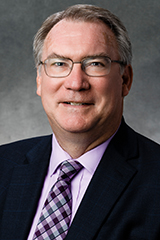
Michael Robak is the Director of the Schoenecker Law Library, Associate Dean, and Clinical Professor at the University of St. Thomas School of Law.
[1] The Departments and Reporter count are as follows: Lawyering Skills (5 reporters), Academic Achievement and Bar Success (1 reporter), Mentor Externship (2 reporters), Alumni Engagement and Student Life (1 reporter), Holloran Center (2 reporters), Clinics (3 reporters), Career and Professional Development (3 reporters), Registrar (1 reporter), and Deans (5 reporters). St. Thomas Law does not currently have a Dean of Students.
By: Megan Bess, Director of the Externship Program and Assistant Professor of Law, University of Illinois Chicago School of Law
A few years ago, I set out to create my first externship course syllabus in my new role directing my school’s externship program. One of my goals to was to empower students to put their work in context and see how it fits in with the structure and goals of their externship organizations. I have found that without the coaxing to do so, students did not consistently seek out information about their organizations outside of the knowledge required to complete the work assigned by their supervising attorneys. Students are eager to make themselves useful to their immediate supervisors and colleagues. But an important opportunity for reflection that aids professional identity formation is missed without considering the larger context of how a student’s role and work contribute to the greater purpose of an organization and how that work serves and/or advances the legal profession.
As I was drafting the syllabus, a long-time adjunct showed me an assignment he developed for his government externship class. It prompted students to identify how decisions are made at the organization. At first glance, this seems simple enough to do. But there can be many layers to decision-making. This requires first identifying who the clients are. It also entails determining how decision-making is shared by clients and attorneys in the organization’s particular setting. He also asked students to describe any checks on the decision-making process. I immediately adapted a version of his reflective assignment for my externship section. I have tweaked it many times since then, but I remain impressed by the depth of investigation and reflection required for students to complete the assignment.
We have adjusted this slightly for students working in different settings. For example, when students extern with courts and/or judges, we ask them to identify the source of the court’s authority and the types of decisions made by the court or judge. We ask them to analyze the decision-making steps and any checks on decisions. When students extern for an organization’s in-house counsel, we help students reflect on how the goals of protecting the organization from liability and ensuring financial stability impact decision-making. Students with public interest organizations delve into decisions about the factors that determine which clients to take on and how to prioritize the use of organizational resources.
While this assignment was created for an externship setting, it has potential to aid in professional identity formation any time a law student works in a real-world legal setting. As part of their efforts to better incorporate professional identity formation, many schools have or are developing programs or guides to help prepare students for real-world lawyering experiences. These could include a suggestion that as part of a student’s onboarding, they investigate how decisions are made at the organization in which they will work. We can also help our students debrief and make sense of the work they have already done if we ask them these questions after they have engaged in a real-world legal experience.
To do this properly, students will need to understand the structure and mission of their organization and how attorneys support this mission. They will also need to identify the client or clients and which decisions attorneys can make and which are reserved for clients. I encourage students to identify examples to help illustrate this process and identify points of tension or confusion in the relationship between attorney and client. The process can be quite complicated, especially in large organizations. Such reflection requires students to think beyond their work and their role to understand the challenges inherent to the attorney’s role in the organization. In my experience, law students ultimately discover that the role of the attorney is not nearly as straightforward as it first seems. This firsthand knowledge of the challenges attorneys face is an invaluable part of their professional identity formation journey.
If you have questions or comments, please reach out to me at mbess@uic.edu.
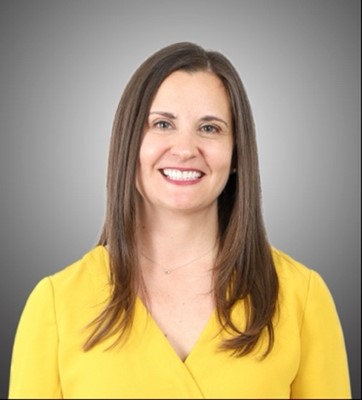
Megan Bess is the Director of the Externship Program and Assistant Professor of Law at the University of Illinois Chicago School of Law.
Baylor Law’s Professional Identity Formation History and the Influence of the Carnegie Report and the Holloran Center on Baylor Law’s Continual Professional Identity Formation Efforts
By: Leah Witcher Jackson Teague, Professor of Law & Director of Business Law Program and Leadership Development Program, Baylor Law School
Thanks to Robin Thorner, Assistant Dean, Office of Career Strategy, at St. Mary’s Law School, law faculty and staff interested in professional identity formation efforts gathered twice in the fall to converse. The next conversation is scheduled for this Thursday, January 26, at 3:00 p.m. Central using the following link via Zoom. I plan to join and hope you will too!
During the fall gatherings, a common request was for more information about law schools’ processes for addressing the recent amendments to ABA 303 and descriptions of programs, events, and activities. In this post, I offer some insight on the background for our work at Baylor Law and also thank the Holloran Center for encouraging us, and so many others, in our work in the areas of professional development and leadership development. In a future post, I will describe Baylor Law’s ongoing review process of our professional identity formation efforts in response to the amendments to ABA Standard 303.
At Baylor Law, professional identity formation efforts have been part of the fabric of our program throughout our 165-year history, but not by that name. As I recently wrote in a post, professional development and leadership development, in an informal manner, have been “baked” into our program from the beginning. Baylor Law’s mission statement expresses a desire to “develop lawyers who are able to practice law with competence, serve with compassion, and provide effective and ethical leadership.” We strive to prepare our students for the demands they will face as members of the legal profession. We also want them to be better equipped to use their legal education and training, along with their status in society as lawyers, to serve effectively and be difference makers.
Our approach to legal education (which incorporates legal analysis, practical lawyering skills, and professionalism) aligns with the scaffolding approach advocated in Educating Lawyers: Preparation for the Profession of Law (more commonly referred to as the “Carnegie Report”). The Carnegie Report, published in 2007, described the three dimensions of professional education that are necessary to adequately prepare students for their careers and professional obligations. The three dimensions for legal education were described as:
- Critical thinking skills and legal knowledge that have been the traditional focus of law schools.
- Practice application and skills development through experiential education as mandated in the ABA Standards beginning approximately 2005.
- Professional identity formation defined as “effective ways to engage and make their own the ethical standards, social roles, and responsibilities of the profession, grounded in the profession’s fundamental purposes.”
This scaffolding approach to legal education aligns perfectly with the practical, values-based, and service-oriented approach to legal education at Baylor Law. When the Carnegie Report came out in 2007, I admittedly did not give its findings and recommendations the attention it deserved, that is, not until hearing presentations and reading articles from our friends at the Holloran Center (specifically Co-Directors Neil Hamilton and Jerry Organ and Holloran Center Fellow Lou Bilionis) and others who devoted years to improving the professional development and ethical leadership of our law students.
Before meeting these dedicated teachers and scholars, we had already begun our own efforts at Baylor Law to enhance and incorporate more emphasis on professional identity formation and professional development of our students, including the creation of our Professional Development Program and Leadership Development Program in 2014. Validation that we were on the right track with our approach to legal education came for us in the fall of 2016 when Neil Hamilton and Lou Bilionis traveled to Waco, Texas to lead our Baylor Law faculty and staff in a workshop. The Holloran Center team complimented us on our multi-dimensional, multi-year approach. Baylor Law professors were encouraged to better communicate to our students the efforts already in place to teach and enforce professionalism. I offer my perspective of fundamental aspects of our approach to teaching and training Baylor Lawyers:
- teach students to think like lawyers;
- offer a variety of practical skills training opportunities;
- require a rigorous practicum in the third year;
- insist upon professionalism (work ethic, respect for one another, integrity, etc.) in all interactions inside and outside the classroom; and
- encourage students to adopt a service orientation in their professional and personal endeavors.
The Holloran Center initiatives continued to inform and inspire our work in the summers of 2017 and 2019, when Baylor Law faculty and staff joined teams from other law schools to attend Holloran Center summer workshops. Again, we were encouraged to compose a description of our professionalism training that spans from orientation through graduation. As part of our work in response to the 303 amendments, we are making a conscious effort to do so. More detail of our work in this area will be shared in a future post.
The Holloran Center’s work on professional identity formation continues to influence and inspire us as we seek to improve and enhance the “whole building” approach (as described by Dean Emeritus Bilionis) to teaching, training, and inspiring Baylor law students. Thank you!
I am always happy to visit further with anyone who desires additional information. Feel free to reach out to me at Leah_Teague@baylor.edu.
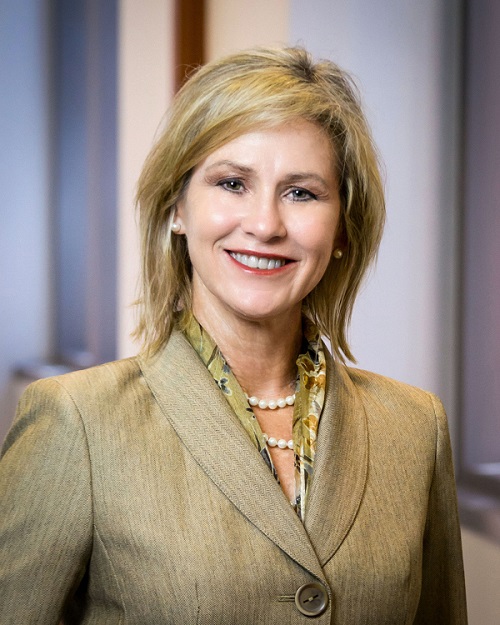
Leah Witcher Jackson Teague is the Professor of Law and Director of Business Law Programs at Baylor Law School.
A Behind-The-Scenes Look at the Holloran Center that Provides Guidance to All Law Schools Implementing Professional Identity Formation
By: David A. Grenardo, Professor of Law and Associate Director of the Holloran Center for Ethical Leadership in the Professions, University of St. Thomas School of Law
Ever since I attended my first Holloran Center Workshop in 2016 and read the powerful materials provided by Neil Hamilton and Jerry Organ, I always wondered how those two operated the Holloran Center. What were they doing at their own law school to implement professional identity since they were the ones giving others ideas of how to do so? What were their personalities like given their considerable influence and impact in legal education?
After joining the University of St. Thomas School of Law and the Holloran Center as its Associate Director this past fall, I can finally answer these questions and share those answers with you. The answers provide an incredible amount of knowledge and wisdom that any law school can use to implement professional identity formation for its students.
Raw Self-Reflection
Professional identity entails continuous self-reflection that allows law students to develop into the professionals they can and want to become. Neil and Jerry strongly encourage this aspect of professional identity for students, and they demonstrate it themselves.
The University of St. Thomas School of Law requires that all 1Ls take three one-credit classes, Moral Reasoning for Lawyers (MRFL), Serving Clients Well, and Business Basics. The concept of professional identity is introduced and reinforced in these courses, particularly MRFL and Serving Clients Well. When St. Thomas Law first introduced some of these ideas, they were included in one three-credit course, Foundations of Justice (Foundations). The three-credit course format was not well received by students. Jerry spearheaded efforts to improve each part of the course, which included commissioning a focus group of students who previously took Foundations to learn what the class did well and not so well. Those conversations resulted in splitting Foundations into two courses— MRFL (one credit) in the fall and Foundations of Justice (two credits) in the spring. Eventually, the two-credit Foundations of Justice course in the spring also was divided and renamed Serving Clients Well (SCW) and Business Basics (BB) to give students exposure to client-service competencies they will need to be successful in practice.
I am now part of this evolutionary process myself as we revisit the design/implementation of the BB course, which I will co-teach with Jerry. Despite being an accomplished and elite teaching professor and scholar, Jerry once again has invited students to share their concerns about the design and content of the course, which has generated some brutal honesty from the students. Jerry has taken the critique and reflected on his own execution and design of the class. We are presently redesigning the class to make it more effective and to engage students where they are.
I also have witnessed Jerry’s and Neil’s honest self-reflection in our weekly Holloran Center meetings where they admit something could have been done better or acknowledge something went well. The vulnerability and candor in which they approach their own self-reflection allow them to truly understand and see where improvements can be made and success has been achieved. This leads to my next observation – they exhibit a growth mindset.
We Will Continuously Try New Things, and When We Fail, Which is Good, We Will Make Them Better
I sometimes feel like I am in the middle of the “Meet the Robinsons” Disney movie when I am working with Neil and Jerry. In that movie, the great inventor, genius, and orphan Lewis goes into the future as a young boy and unknowingly meets his eventual family. As he attempts one of his inventions, it fails horrendously and his future family cheers and congratulates him, “You have failed! From failure we learn, from success. . . not so much.” With Neil and Jerry, there is a humble joy in them when they speak of attempts at implementing professional identity with little or no success. Each of them will say something like, “We tried, but it didn’t work the way we expected or not at all.” They make statements like these without remorse or regret; instead, they do so with humility, pride, and hope. They would probably not call their efforts failures, but instead would likely characterize their attempts as Thomas Edison did, “I have not failed. I’ve just found 10,000 ways that won’t work.”
They attempt new things knowing that they will not be perfect and actively seek out ways to improve what they have done.
The tinkering and re-jiggering of MRFL, SCW, and BB, led to the inclusion of Roadmap into SCW. Now SCW includes one-on-one coaching of students in January and February of the 1L year using the Roadmap in SCW.
Roadmap, for the uninitiated, is a book written by Neil Hamilton that guides a law student “to prepare and implement a successful plan for meaningful employment.” Neil won the prestigious E. Smythe Gambrell Professionalism Award from the ABA in 2015 based on the Roadmap and his efforts to improve professionalism in the legal profession. Neil is currently finishing up the third edition of the book to make it even more accessible and helpful to law students. The revised Roadmap will be ready for students to utilize this spring in SCW.
Over the last two decades, Jerry and Neil also have played a role in developing and implementing the classroom component associated with the law school’s distinctive Mentor Externship program in which all law students have a mentor for each of their three years in law school. A law student can change mentors during that time, but each law student is guaranteed a mentor throughout every year of law school. This program has also evolved and changed over time to better meet the needs of our students. Presently, in the second year and third year, there is a classroom component with students earning one pass/fail credit in each year. The classroom component involves both small group conversations and also one-on-one coaching with each student three times over the course of the academic year. The Mentor Externship program includes a good deal of professional identity formation, such as self-reflections by the students based on the work they do and their experiences in the program. In addition, each student must develop a networking plan designed to support the individual student’s professional development as reflected in the student’s work with Roadmap.
Neil, through trial and error, even added coaches to his Professional Responsibility course. Now, his class not only teaches the basics of what law students need to understand and apply the rules of professional conduct, but it also explores aspects of professional identity formation as students learn from local practitioners.
Whatever Neil and Jerry do (or try to do), their focus is always on the students—learning about where the students are and searching for the most effective ways to help each student grow. Their thoughtful and creative approach entails a constant loop that involves trying something, seeking feedback, reflecting, improving the exercise, lesson, or class, and then repeating those steps.
Whole-Building Approach
Neil and Jerry have been working for several years towards a whole-building approach to professional identity. They preach it to other law schools, and they are living it out themselves. They have been working diligently to create a “one file” system that allows many departments of the law school to add feedback and notes on each student. The Roadmap coaches from SCW, Mentor Externship professors, the Office of Career & Professional Development (CPD), and Lawyering Skills (aka legal research and writing at some law schools) professors would each add their notes, thoughts, and work relating to professional identity formation into a file for each student so that when faculty or staff meet with students they could see the evolution of the student’s professional identity and the student’s professional development plans over the course of law school.
In particular, Jerry and Neil worked with our law library and IT experts to create a “one file” system that is scheduled to begin operation next semester, starting with the Roadmap and the Roadmap coach observations that will go into that file for each student. Jerry and Neil believe that we will be able to train the 2L and 3L Mentor Externship faculty on how to use the “one file” system by contributing their observations on professional identity formation learning outcomes into an efficient form for gathering insights after each of the six one-on-one meetings that occur throughout the 2L and 3L years. Additionally, notes from the one-on-one meetings with CPD staff will also be added to each student’s file. Neil and Jerry also plan on providing our required curriculum colleagues with some positive and reinforcing language on professional identity to cross-sell the value of these professional identity formation efforts to the students.
Planting Seeds
Jerry and Neil are always anticipating the needs of law students and law schools in the future. They look ahead to try to bridge the gap between what will be needed and what is currently offered. The Holloran Center’s next step will be hosting a symposium/workshop in the spring of 2023 in conjunction with casebook publishers focused on 1L and Professional Responsibility casebook authors (and possibly law professor adopters of those casebooks). It will be the first time the Holloran Center intentionally seeks out casebook authors and 1L/Professional Responsibility professors to convene in a single setting where they can learn, share, and generate ways to help law students develop their own professional identities within these required courses.
Neil and Jerry have done so much amazing work in the legal academy and professional identity formation in particular. I continue to learn from their fearlessness, humility, optimism, and apparent clairvoyance. Even though I was their twentieth choice to serve as Associate Director—I was actually their tenth—I feel honored and humbled to serve alongside them as they continue their phenomenal work.
Please email me at gren2380@stthomas.edu if you have any questions or comments about this post.
